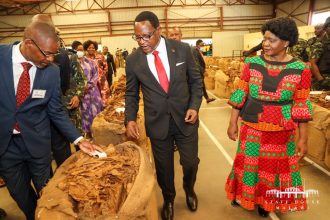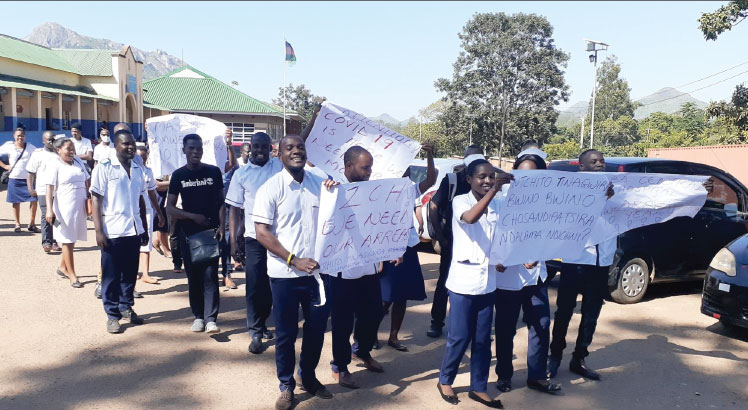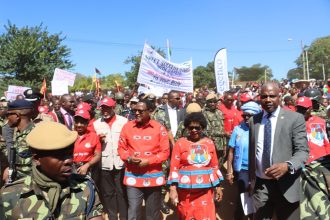Donors inflow to decide kwacha movement

The African Development Bank (AfDB) and a Lilongwe-based banking expert have separately said inflows from Malawi’s development partners in the current lean season, will be key to determine the overall movement of the Kwacha until next year when tobacco marketing open.
The experts have also projected that a steeper depreciation of the local unit is expected, reflecting seasonal high demand for foreign exchange for imports.
“The timeliness of donor inflows estimated at 40 percent of the 2013/14 budget will be key to achieving exchange rate stability and boosting the reserves during the lean season,” says AfDB in its latest report on Malawi but has also analysed other Southern Africa countries.
The statement by the Tunis-based bank, comes at time when the kwacha continues to lose ground to other foreign currencies, notably the dollar, and has slipped to K445 to a dollar in some official foreign currency dealing points.
As such the continued weakening of the kwacha against the dollar is hitting importers hard as they have to cough more kwachas to finance the importation of their import consignments.
Demand for foreign exchange often peaks during the last quarter of the year and this is time when the government imports fertilizer meant for the Farm Input Subsidy Programme (Fisp).
“A sustained tight monetary policy stance, complemented by periodic central bank’s interventions in the foreign exchange market, should help ease pressure on the exchange rate and ensure exchange rate instability during the post-tobacco season,” observes the bank.
The bank recalls that following the sharp appreciation of the kwacha in June this year, the local currency started showing signs of weaknesses during the quarter.
It says the kwacha depreciated to K337 in September from K331 per dollar in June.
AfDB also explains that the recent depreciation of the kwacha is attributed to foreign exchange demand pressures as the lean tobacco season kicks in adding that the temporary easing of the liquidity constraint –as evidenced by the fall in money market interest rates – has contributed to recent pressures on the exchange rate.
Overall, the bank says real Gross Domestic Product (GDP) growth is expected to rebound to five percent in 2013 from 1.8 percent in 2012, underpinned by sound macro policies, donor inflow, recovery in tobacco exports and an improved availability of foreign exchange.
In a separate interview yesterday, a Lilongwe-based banker who is also an economist said the prevailing donor funds delay, coupled with the withholding of IMF resources earmarked towards the Extended Credit Facility (ECF) program is likely going to trigger speculations on the foreign exchange market.
Said the banker: “I am seeing an accelerated depreciation pace of the kwacha and that can only be contained somewhere in April or May when tobacco dollar will start trickling in.”
RBM Governor Charles Chuka said in Lilongwe during an IMF press conference that he was optimistic that the local currency would not swing massively in the wake of donor finds since the economy is earning between $40 million and $70 million monthly from private sector players.






After 50 years of demonstrated failure of an agricultural policy, renewed and modernised Malawian parties still believe that agriculture remains a central strategic thrust for this economy. In absence of a 360 degree evaluation of Malawi economic fundamentals, the agriculture policy may seem like the right solution. It makes sense to the masses to say we will all focus on agriculture. And yet when evaluated under a sound modern monetary policy microscope, one sees a gaping 6 month gap where the country just stands in the boxing ring taking in blows to the head undeterred; to use a boxing analogy. There are no exports to defend the kwacha against imports. This causes the kwacha to depreciate and increases national borrowing debt. This has gone on for 50 old years and people are asking why is Malawi not developing. Hmm, I wonder too!
Unfortunately, this monetary aspect is a reserve for monetary specialists that many people know very little about. That is why you find many economic commentators cheering on donor aid freeze as solidarity action against looters. While to a classically trained eye those actions are clearly deleterious to sound monetary policies. Therefore, such donor solidarity action is really a “spurious solidarity” that must be avoided at any cost. This lack of monetary system appreciation has led Malawi to follow wrong economic, monetary and fiscal policies of fixing the kwacha instead of floating it, foreign borrowing for consumption for government administration instead of only borrowing for investment and encouraging FDI investments that do not pay for themselves in exports.
Malawi needs professionals, not politicians, to develop an end-to-end integrated development strategy that can lift this country into premier League of Nations. For example, Malawi can stop the kwacha from ever depreciating if it can be shown how to live within its means right now. The country needs to implement watertight world-class financial systems using Oracle Financials or SAP solutions, implemented with clear approval processes, with named user as approvers. For example, tell Mr Banda, PS for health, you are accountable for the approval of $20m. “One strike and you are out”. You will go to jail and you will be banned from ever holding public office in Malawi. Once a month reconcile the books with a truly independent ombudsman board comprising a team of observers (e.g. from opposition, US, EU or Japan) to hold the govt of the day accountable. Even more importantly, this country needs an economic industrial growth strategy (not a social or political solution) that is anchored on sound fiscal and monetary policies so that industrial investment can create 5-10 million jobs and real wealth for all Malawians within this decade!